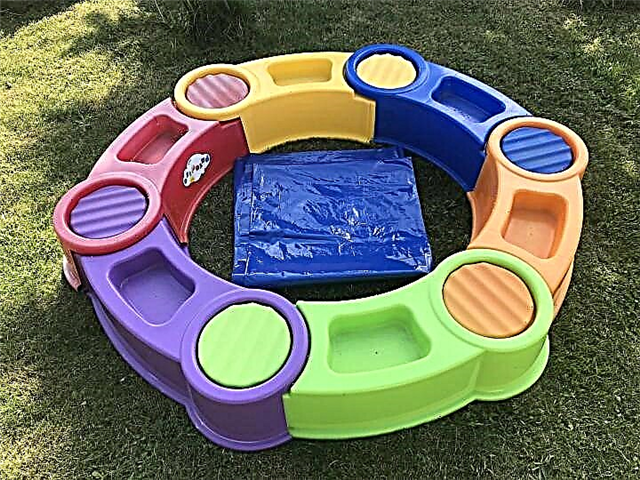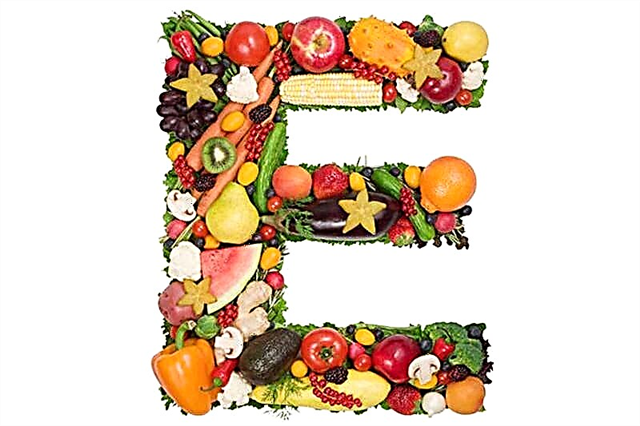
Pumpkin has long been used in cooking due to its pleasant taste and many beneficial properties. When can you introduce a small child to this fruit and what can you cook from pumpkin for babies in the first year of life and older children?

Benefit
- Pumpkin is rich in various nutrients, including vitamin C, iron, vitamin D, calcium, silicon, B vitamins and many other compounds. Thanks to this composition, the inclusion of its fruits in the children's menu has a positive effect on the growth and proper development of the child's body.
- Among all the vitamins, beta-carotene is the most valuable in the composition of pumpkin, which is most of all in bright fruits. Carotene is important for vision and bones, as well as immunity.
- Such a melon culture contains a lot of pectin, known for its ability to remove harmful substances and toxins from the body.
- The presence of dietary fiber makes pumpkin a valuable product for regulating digestion and preventing constipation. Baked and boiled pumpkin is recommended for high acidity, and juice for bloating.
- The decoction and juice of pumpkin with the addition of honey are noted for the ability to calm the nervous system, improve memory and sleep, help with stress and depressive moods.
- Pumpkin has a choleretic effect, therefore it is recommended for the prevention of liver and biliary tract diseases.
- Since pumpkin fruits are rich in magnesium and potassium, diuretic effects are noted in dishes made from them, which is important in the presence of kidney disease.
- The low calorie content of pumpkin dishes makes them a good choice for overweight babies.
See the video from Humana for why pumpkin should be introduced into baby food.
About the beneficial properties of pumpkin seeds
Pumpkin seeds have a mild laxative, anti-inflammatory and anthelmintic effect. Their regular consumption improves digestive function and relieves constipation. This product is rich in natural healthy fats, vitamins D, K, A, E, as well as many trace elements, among which iron and zinc are especially prominent.
It is important to note that seeds are useful only raw or dried. If they are fried, most of the beneficial properties will be lost. In addition, you should be aware that pumpkin seeds are not recommended for children under 3 years old.

Harm and contraindications
- Too frequent consumption of pumpkin dishes can cause "carotene" jaundice.
- Pumpkin complementary foods should not be given in case of individual intolerance to the product.
- Pumpkin is contraindicated in diabetes and hepatitis.
- It is also not recommended to cook pumpkin for babies with exacerbations of stomach and small intestine diseases.

Are there allergies?
Pumpkin is a food that can cause an allergic reaction because it contains a lot of carotene. For this reason, the introduction of pumpkin dishes into the children's diet is carried out gradually and very carefully.
How to make mashed potatoes?
Many babies like pumpkin puree because it has a pleasant sweetish taste. It can be prepared in different ways from both fresh and frozen pumpkin. Let us dwell on each of them in more detail.

How much and how to cook pumpkin?
After pouring the peeled pumpkin with water, put the saucepan on the fire, let it boil, cover and simmer over the lowest heat for 20 to 25 minutes. You will know that the pumpkin is ready when it pulls off soft. After draining the water, rub the cooked slices through a sieve to make sure there are no fibers. If it is necessary to make the consistency more liquid, add milk (for children under one year old - mother's or a mixture).
In a multicooker
Take 350 g of pumpkin, separate the peel, fibers and seeds from the pulp, and then cut into small cubes. Add 200 ml of water to the vegetable (you can also add a little sugar), place in a multicooker and turn it on to the "stewing" mode. After 40 minutes, remove the pumpkin, transfer to a blender and beat until smooth.

In a double boiler
After cutting a small piece from the pumpkin, remove the skin and cut the vegetable into cubes. Arrange them in the basket of the steamer, place in the appliance and cook until softened (usually 20 minutes cooking is enough). Beat the finished pieces in a blender, if the crumb has just begun to taste the pumpkin, or mash with a fork for kids who are learning to chew. After cooling the puree to a warm state, you can offer it to your child.
In the oven
Place the peeled and diced pumpkin in a thick-walled container and add 1/2 cup of water. Bake in the oven for about 15 minutes, until the dish is tender. Next, the pumpkin can be passed through a sieve or kneaded with a fork, depending on the consistency that your child likes.

How to introduce into complementary foods?
The introduction of pumpkin into the baby's diet can be carried out after the baby has tasted zucchini, broccoli or other vegetables. Typically, these vegetable complementary foods are introduced from 6 months of age, although it is permissible for artificially fed crumbs to include pumpkin puree in the menu a little earlier (from 4.5-5 months).
The first serving of pumpkin, which a child under one year old will get to know, should leave no more than half a teaspoon (or even better, only a quarter of a spoon). The puree for this first sample should be homogeneous, so breast milk or formula is often used to dilute it.
Give the pumpkin to the baby for the first time in the morning feeding, and then carefully watch the baby until the evening. After making sure that there are no problems after such a meal, you can increase the portion to the recommended age norm for vegetable dishes.
Recipes for children over 1 year old
Pumpkin Applesauce
Take one sweet and sour apple and a slice of pumpkin so that each component is in the same amount. Cut the pumpkin into small pieces, pour boiling water over and boil until tender. Next, add the diced apple to the boiled pumpkin, boil for another 5-10 minutes and rub the mixture through a sieve. You can add honey to the finished puree.

Pumpkin salad
You will need to take in the same amount of apple, pumpkin and melon. Cut the melon and apple into cubes and grate the pumpkin. Mix ingredients, add honey and lemon juice.
Pumpkin with meat
Boil until tender a piece of pumpkin, carrots and celery (take half as much pumpkin for carrots and three times as much celery). Puree the vegetables. Simultaneously boil the turkey or chicken, fiber or finely chop. Mix meat with vegetables or lay out separately depending on your baby's preference. Sprinkle with herbs on top if the child loves it.
Pumpkin pancakes
Grate 150 g pumpkin and pour over half a glass of cream. Simmer for about 10 minutes over low heat and while still hot, add a tablespoon of semolina, a little sugar and one egg to the pumpkin mass. Next, cook like regular pancakes. Serve with sour cream.
Pumpkin juice
Pass the washed and chopped vegetable through a juicer and dilute the pops with water. Give your child this juice up to 2 times a week. It is important that the juice is squeezed out immediately before use.

How to make soup?
Use these ingredients for pumpkin soup:
- 150 g pumpkin
- 1/2 carrot
- 1 potato
- 500 ml water
The washed vegetables must be peeled. Then the potatoes and pumpkin are cut into cubes, and the carrots are finely grated. After boiling vegetables for 30 minutes in boiling water, homogenize the dish with a blender. Finally, salt the soup and add a little vegetable oil.
Another easy way to make pumpkin puree soup is to use a slow cooker:
- Peel 300 g of ripe pumpkin, remembering to remove the seeds. Cut the pulp into medium cubes.
- Also peel two onions, four potatoes, and one carrot. Cut the onion into half rings, the carrots into strips, and the potatoes into small cubes.
- Turn on the multicooker for baking. Heat some vegetable oil in a bowl, then add vegetables and fry for about 15 minutes, stirring occasionally.
- Then switch to the "stewing" mode and leave the dish to cook for one hour.
- Remove vegetables from the appliance, salt and chop with a blender.
- Add 400 g of cream with 20% fat, mix well and pour the puree back into the multicooker.
- Select the soup mode and bring to a boil. In bowls, the soup can be decorated with herbs, croutons, butter.

Pumpkin porridge
Millet
To prepare millet porridge, grate 100 g of pumpkin peeled and seeds. Boil a glass of milk, pour a tablespoon of millet into it and cook with constant stirring for 10 minutes, then add the grated pumpkin. Continue cooking until thick, let the porridge cool slightly, and season with honey and butter before serving.
Semolina
Cut 300 g pumpkin, peeled and seeded, into cubes. Put it in a saucepan, pour 340 ml of milk into it, bring to a boil and cook until soft. Dissolve two tablespoons of semolina in half a glass of water. With continuous stirring pumpkin boiling in milk, slowly pour the semolina into a saucepan. Season with salt and sugar to taste. Cook until the porridge is thick enough. At the end of cooking, you can add chopped dried fruits such as raisins and prunes.
Rice
Peel and cut into pieces 150 g of pumpkin, pour a glass of boiling water, add a teaspoon of sugar and cook under a closed lid for 15 minutes. Add 50 g of rice grits and half a glass of milk to the pumpkin. Continue cooking for about 20 minutes, stirring occasionally. After turning off the heat, add salt and 15 g of butter to the dish.

Tips for choosing
- Choose a medium sized pumpkin as very large fruits are either excessively dry or watery.
- Take a good look at the pumpkin when purchasing. Do not pick fruits that are scratched or damaged, or with areas of decay. The pumpkin skin should be very dense and not squeezed by the nail.
- When purchasing a cut pumpkin, choose a fruit with a rich yellow or orange color. The brighter the pumpkin you buy, the more carotene it will contain.
- If you purchased a whole pumpkin and cut it at home, do not store it for long afterward. The best option is to either buy a small piece of pumpkin to use immediately in cooking, or freeze the sliced pumpkin pulp for future cooking.
- A whole pumpkin should not be kept in direct sunlight or in a very cold place, as this contributes to its rotting. Better to put the whole fruit in a ventilated place with a temperature of + 10 + 15.

Find out if your child's weight is normal using the following calculator.



